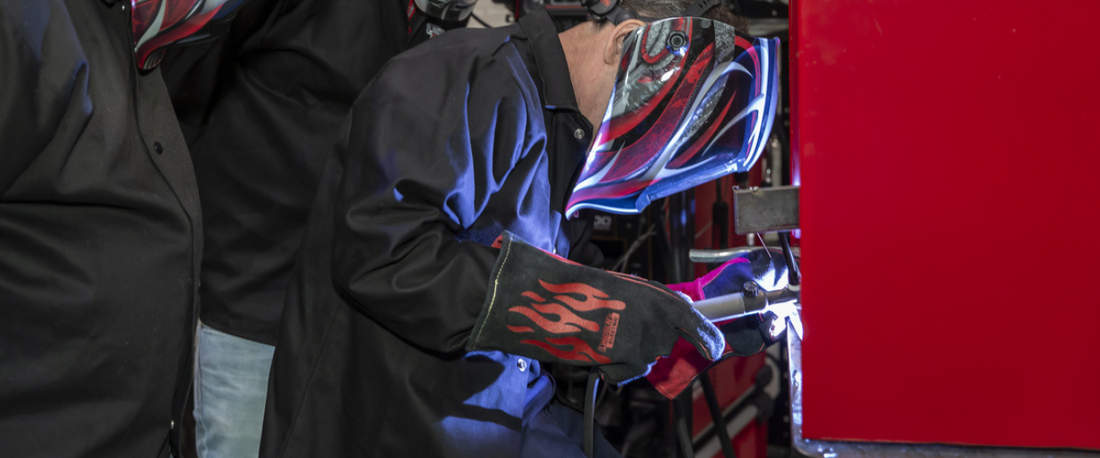The auto darkening welding helmet is one of the more functional technological advancements in the welding safety equipment arena.
The eye shield on old school welding helmets have one setting: dark. Obviously this is intended to protect your eyes from the damaging and painful effects of exposure to the bright flare of a welding arc. When you’re welding, however, you often pause to grind or make cuts to the metal you’re working with, or interact with others in the welding shop or on the jobsite. And with an old school welding helmet, you have to lift up the visor, or totally remove the helmet to actually see.
The Auto-Darkening Welding Helmet Advantage
With an Auto-Darkening Helmet, the old school method of flipping the visor down or lifting it up is not necessary because the built-in eye shield sensor automatically recognizes variations between light and dark, relative to where the eye shield is focused. The auto-darkening control settings, however, are a bit more tricky than they might seem, but a few basic control settings tips will help you to make much better use of your auto-darkening welding helmet.
Basic Darkening Controls
Typically, auto-darkening helmets include three basic settings: shade, sensitivity and delay, and all settings range for 1 – 10.
Shade refers to the density of the darkening shield; 1 being almost clear glass, and 10 the completely dark, unless focused on the light of an active arc.
Sensitivity refers to the degree of light required to engage the shade: the brighter the light, the darker the shade.
Delay refers to the speed at which the shade engages once light is detected.
Control Setting Based on Location
In your average welding or fabrication shop setting, you would probably want to keep all settings closer to ten, as most dramatic shifts in light are usually created by the arc welding machine you’re working with.
But what if you’re working in a fabrication shop, manufacturing facility or industrial plant with a loading dock or bay doors adjacent to your work area? Or perhaps you’re working in the field on a construction project or jobsite? The sun is actually immeasurably darker than any arc light, and will affect an auto-darkening shield the same as an arc light.
So if you’re working in an environment with tons of natural light (sunlight), you probably want to reduce the sensitivity and delay settings, to avoid the shade engaging every time your eye shield happens to catch a ray of sunlight.
Another import factor to keep in mind is the degree of light intensity variation between different welding processes. Cutting torches, oxyacetylene welding equipment and lower voltage arc welders create much less intense light than higher voltage arc welding machines. Therefore, you will need to adjust the shading settings according to the intensity of the arc created by the welding machine you’re working with.
For more information, follow this link to an informative video on Auto-Darkening helmets.



